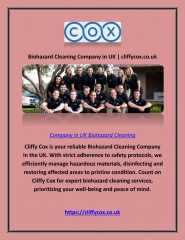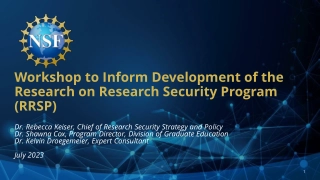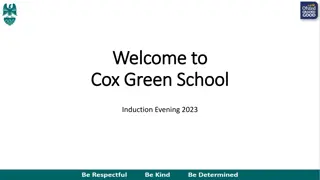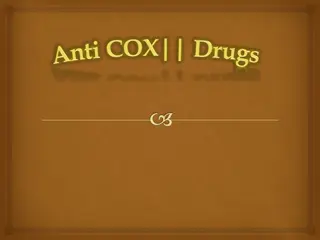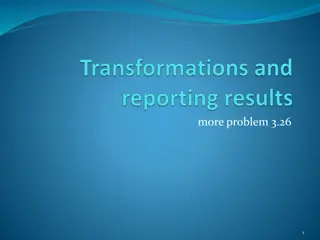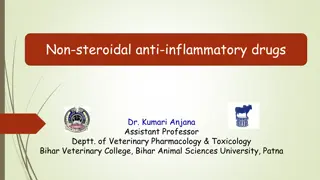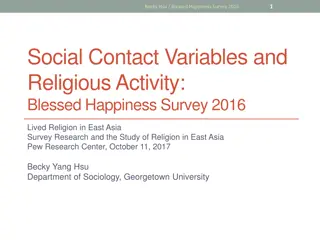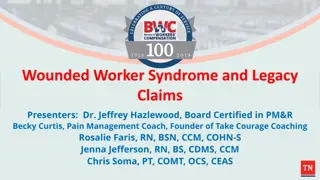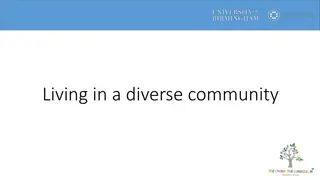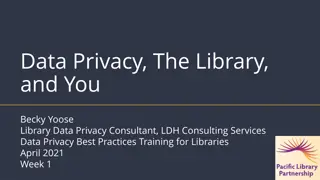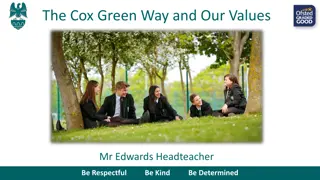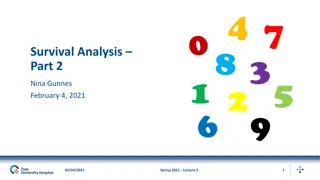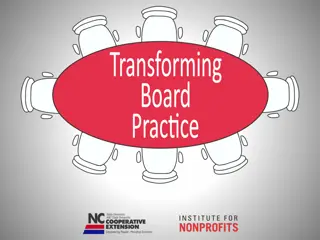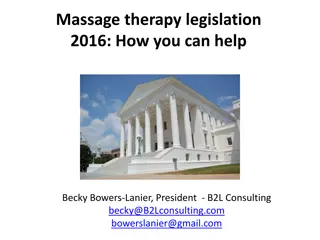
Enhancing Learning Through Collaboration, Communication, Critical Thinking, and Creativity
Discover the importance of the 4 Cs - Collaborate, Communicate, Use Critical Thinking, and Use Creativity in education. Learn how to teach these skills effectively to foster a well-rounded learning environment for students.
Download Presentation

Please find below an Image/Link to download the presentation.
The content on the website is provided AS IS for your information and personal use only. It may not be sold, licensed, or shared on other websites without obtaining consent from the author. If you encounter any issues during the download, it is possible that the publisher has removed the file from their server.
You are allowed to download the files provided on this website for personal or commercial use, subject to the condition that they are used lawfully. All files are the property of their respective owners.
The content on the website is provided AS IS for your information and personal use only. It may not be sold, licensed, or shared on other websites without obtaining consent from the author.
E N D
Presentation Transcript
SO WHAT ARE THE 4 CS? VIDEO
WHY? COLLABORATE COMMUNICATE USE CRITICAL THINKING USE CREATIVITY
COLLABORATE COLLABORATIVE LEARNING DOESN T COME NATURALLY FOR MOST STUDENTS. IT MUST BE TAUGHT DISCUSS FAIRNESS AND WORK DISTRIBUTION PERSONAL RESPONSIBILITY TEACH LISTENING, PARAPHRASING, TAKING AND GIVING CONSTRUCTIVE FEEDBACK REVIEW HOW TO NEGOTIATE AND COMPROMISE. TEACH THEM HOW TO ASSIGN ROLES. DEVELOPS HIGH LEVEL THINKING, ORAL COMMUNICATION, SELF MANAGEMENT AND LEADERSHIP SKILLS INCREASES SELF-ESTEEM AND RESPONSIBILITY INCREASES UNDERSTANDING OF DIVERSE PERSPECTIVES MORE THAN 80% OF MIDSIZE OR LARGER EMPLOYERS LOOK FOR COLLABORATION SKILLS LOOK FOR DIGITAL TOOLS TO ENHANCE COLLABORATION DIVIDE AND CONQUER IS NOT COLLABORATION
COMMUNICATE TEACH EMPATHY STUDENTS NEED TO UNDERSTAND THAT THEIR VIEWPOINTISN T THE ONLY ONE. TEACH CONVERSATION SKILLS MODEL IT FOR THEM, USE GOOD VOCABULARY LISTENING NOT JUST HEARING REFLECTION AND CLARIFICATION THE POWER OF PAUSING THINK, ASK QUESTIONS PARAPHRASING, QUESTIONS, FEEDBACK USING MEDIA TO COMMUNICATE TEACH ABOUT NON VERBAL COMMUNICATION BOTH IN PERSON AND IN WRITING
CRITICAL THINKING WHAT IS IT? INFORMED DECISION MAKING, ANALYZING, EVALUATING, THINKING. WHY DON T WE? TOO MANY FACTS, TOO MUCH MEMORIZING, TOO LITTLE THINKING, STUDENT S AREN T TRAINED TO THINK. ENCOURAGE STUDENTS TO: ASK QUESTIONS, LOOK FOR ANSWERS, APPLY WHAT THEY LEARN, SOLVE PROBLEMS, LISTEN TO EACH OTHER. USE QUESTIONING PROPERLY. SLOW DOWN, LET KIDS FIGURE IT OUT.
CREATIVITY BRAINSTORMING -EXPLORING ALLOW MISTAKES QUESTIONING QUESTION ASSUMPTIONS BUILD SELF-EFFICACY HELP THEM BELIEVE IN THEIR OWN ABILITIES TO BE CREATIVE ALLOW TIME FOR CREATIVE THINKING CREATIVE COLLABORATION ENCOURAGE SENSIBLE RISK SEEK AND CREATE STIMULATING ENVIRONMENTS INNOVATE MAKE IT REALITY
HOW DO YOU CURRENTLY TEACH THE 4 CS? Think about how you teach each of these in your class, write down a few ideas Let s see what you do: Get out your device
We need to remind/point out/model these for our students. Tell them what they are doing so they recognize and understand the 4 C s. IMPORTANT THINGS TO REMEMBER: These typically aren t independent of each other you can t collaborate without communicating, you can t think critically without being creative. CTE is a natural place to practice and engage in the 4 c s.
NOW LETS PLAY IN MY CULINARY WORLD! WE ARE GOING TO LEARN ABOUT PLATING DESSERTS AND THEN YOU WILL PARTICIPATE IN AN ACTIVITY THAT USES ALL 4 OF THE C S.


